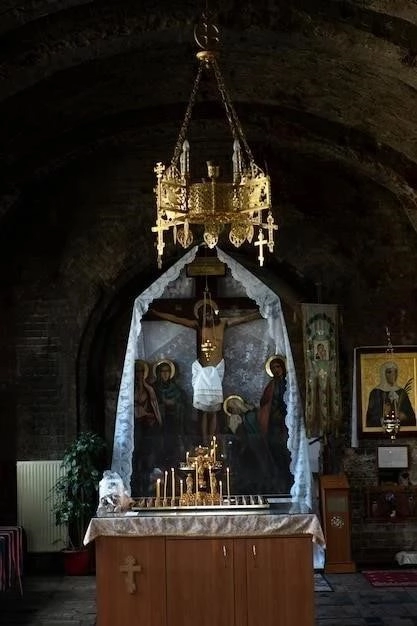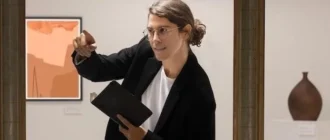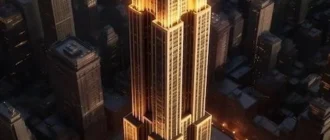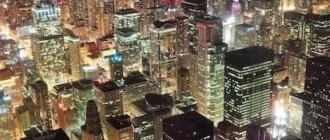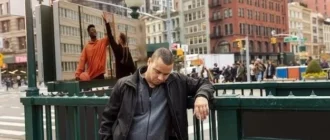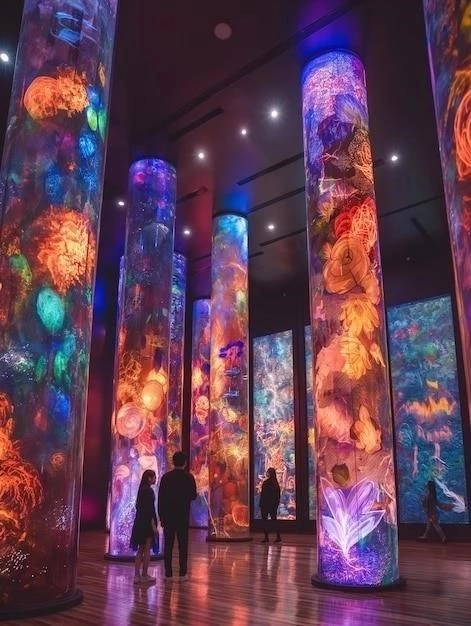A Historical Overview
The West Village, a neighborhood brimming with charm and history, stands as a testament to New York City’s ever-evolving narrative. Initially settled by the Dutch in the 17th century, the area was once known as the “Western Addition to Greenwich Village.” This designation arose from its location west of the primary Greenwich Village settlement to the east. Over time, the name was shortened to “West Village,” solidifying its own distinct identity. The neighborhood’s character is deeply rooted in its architectural heritage, primarily defined by the iconic brownstone houses that line its quaint streets. These structures, dating back to the 19th century, exude a timeless elegance and speak to the neighborhood’s enduring appeal. The West Village’s allure extends beyond its physical beauty. Throughout the 20th century, it evolved into a haven for artists, writers, and musicians, fostering a vibrant bohemian culture that continues to permeate its spirit. This unique blend of architectural integrity and artistic energy has cemented the West Village’s place as a beloved and significant landmark within New York City.
The Birth of a Neighborhood: From Western Addition to West Village
The emergence of the West Village as a distinct neighborhood is a fascinating narrative woven into the very fabric of New York City’s development. Initially, this area existed as an appendage to its easterly neighbor, Greenwich Village, and was aptly termed the “Western Addition to Greenwich Village.” This designation, while geographically accurate, lacked the resonance of a unique identity.
A pivotal moment in the neighborhood’s evolution arrived with the construction of the Hudson River docks in the 19th century. This infrastructural development spurred a wave of residential construction westward, pushing the boundaries of the city and breathing life into the then sparsely populated Western Addition. Row upon row of elegant brownstones began to define the streetscape, attracting affluent families seeking refuge from the bustling city center.
The name “West Village,” however, did not simply arise from a cartographer’s pen. It was organically embraced by residents, signifying not just a geographical distinction but also a growing sense of communal identity. This burgeoning sense of self was further solidified in the face of external pressures. Notably, the proposed construction of an elevated highway through the heart of the neighborhood in the mid-20th century ignited a wave of fierce opposition. Spearheaded by influential figures like Jane Jacobs, a renowned urban activist and resident of the West Village, the community rallied together, ultimately succeeding in halting the project. This triumph served as a testament to the collective spirit and pride that had taken root within the West Village. It marked the neighborhood’s transition from a mere “addition” to a distinct entity, steeped in history, architectural beauty, and a tenacious sense of community.
Architectural Significance: A Tapestry of Styles
The West Village stands as an architectural sanctuary, its charming streetscapes narrating a captivating tale of evolving architectural trends spanning centuries. Unlike neighborhoods rigidly adhering to a single style, the West Village embraces an eclectic blend, each structure whispering stories of bygone eras.
Undoubtedly, the brownstone reigns supreme, its stately presence synonymous with the neighborhood’s visual identity. These primarily 19th-century townhouses, clad in warm, reddish-brown sandstone, exude an air of timeless elegance. From the ornate cornices to the intricate ironwork adorning their stoops, each detail speaks to a dedication to craftsmanship and artistry. However, interspersed among these brownstone icons, one discovers a delightful array of architectural expressions. Federal-style homes, with their symmetrical facades and Palladian-inspired doorways, hearken back to the neighborhood’s early days, a testament to the city’s nascent growth.
The late 19th and early 20th centuries ushered in a wave of revivalist styles, evident in the intricate detailing of Queen Anne and Romanesque Revival townhouses that grace the West Village’s charming streets. Ornamental brickwork, decorative gables, and stained-glass windows inject a touch of whimsical grandeur, showcasing the evolution of architectural tastes and the neighborhood’s embrace of diverse design philosophies. Beyond the residential realm, remnants of the West Village’s industrial past linger in the form of converted warehouses and factories, now reimagined as stylish lofts and studios. These structures, with their exposed brick walls and expansive windows, pay homage to the neighborhood’s industrious roots while seamlessly blending with its contemporary spirit. It is within this harmonious fusion of architectural styles that the West Village truly shines, showcasing not just a collection of buildings but a living testament to New York City’s dynamic architectural heritage.
The Allure of Brownstone Houses
The brownstone house stands as an undeniable symbol of the West Village, its architectural presence shaping the neighborhood’s identity and captivating generations with its enduring charm. These stately structures, primarily erected during the 19th century, transcend mere dwellings; they embody a bygone era of craftsmanship, elegance, and a certain understated grandeur that continues to resonate today.
Clad in the namesake brownstone—a specific type of sandstone quarried in the surrounding region—these townhouses exude a warmth and solidity that sets them apart from their more modern counterparts. The brownstone itself, often ranging in hue from a rich reddish-brown to a deep, chocolatey brown, imbues the buildings with a sense of history, each subtle variation in color hinting at the passage of time and the unique geological origins of the stone. Beyond their materiality, brownstones are celebrated for their distinctive architectural features. High stoops, leading to stately entrances, create a sense of grandeur and separation from the bustling city streets, while intricate ironwork railings add a touch of ornate elegance. Bay windows, a common feature, protrude gracefully, inviting natural light to flood the interiors and offering residents charming views of the tree-lined streets below.
The allure of brownstones extends beyond their aesthetic appeal. These homes, typically multi-story structures, often featuring spacious rooms and flexible layouts, catered to the needs of growing urban families, a legacy that continues to resonate in the present day. Furthermore, the brownstone’s enduring appeal speaks to its adaptability. Over the decades, residents have seamlessly blended modern sensibilities with the buildings’ historic bones, transforming interiors while preserving the timeless facade. It is this unique combination of historical significance, architectural integrity, and inherent adaptability that has solidified the brownstone’s status as a coveted symbol of West Village living.
Notable Streets and Landmarks
The West Village, a treasure trove of New York City history, unfolds through its charming streets, each turn revealing architectural gems and whispering tales of bygone eras. From picturesque residential enclaves to bustling thoroughfares imbued with artistic legacy, the neighborhood offers a captivating tapestry of notable streets and landmarks.
Among the most iconic is undoubtedly Bleecker Street, a vibrant artery pulsating with the neighborhood’s creative spirit. Once a haven for Beat Generation writers and folk musicians in the mid-20th century, Bleecker Street retains its bohemian allure, now home to intimate jazz clubs, independent bookshops, and cozy cafes. As one meanders along its charming, tree-lined blocks, it’s easy to envision the ghosts of literary giants like Jack Kerouac and Allen Ginsberg, their presence still palpable in the air.
Seeking respite from the city’s clamor, one inevitably finds solace in the tranquil beauty of Gay Street, a short, cobblestone lane often hailed as one of the most picturesque in all of New York. Lined with charming Federal-style townhouses, their brick facades adorned with ivy and window boxes overflowing with blooms, Gay Street transports visitors to a bygone era. Its secluded ambiance, seemingly untouched by the relentless march of time, offers a glimpse into the neighborhood’s quaint past.
No exploration of the West Village would be complete without a visit to Jackson Square Park, a verdant oasis nestled at the intersection of Greenwich Avenue and Eighth Avenue. Once a bustling marketplace, the park now serves as a gathering place for residents and visitors alike, drawn to its tranquil ambiance and picturesque surroundings. Framed by the stately towers of the nearby Greenwich Village Historic District, Jackson Square Park stands as a testament to the neighborhood’s ability to seamlessly blend its rich history with its vibrant present.
Residential Life in the West Village
Residing in the West Village transcends mere habitation; it’s an immersion into a coveted lifestyle, a unique blend of historical charm, urban sophistication, and a captivating sense of community. This alluring neighborhood, nestled within the heart of Manhattan, offers its residents a reprieve from the city’s frenetic pace, fostering a sense of belonging often absent in the bustling metropolis.
Stepping onto the tree-lined streets, one immediately senses a palpable shift in atmosphere. The relentless honking of taxis fades, replaced by the gentle murmur of conversations spilling out from sidewalk cafes and the melodic strums of a lone guitarist serenading passersby. Life here unfolds at a more leisurely pace, a welcome respite for those seeking refuge from the city’s ceaseless energy.
Weekends beckon residents to explore the neighborhood’s vibrant offerings. A morning stroll might lead to a bustling farmers’ market, brimming with locally sourced produce, artisanal cheeses, and freshly baked goods. A leisurely afternoon could be spent browsing the eclectic mix of boutiques and art galleries that line Bleecker Street, each storefront a testament to the neighborhood’s creative spirit. Come evening, a diverse culinary scene awaits, from intimate, candlelit bistros serving farm-to-table fare to lively trattorias offering authentic Italian flavors. Beyond its commercial and recreational offerings, the West Village fosters a strong sense of community.
Brownstone stoops, a defining feature of the neighborhood’s architecture, transform into impromptu gathering spots where neighbors exchange greetings, share local news, and watch the world go by. It is within this intimate setting, where history and modernity coalesce, that the true essence of West Village living reveals itself – a vibrant tapestry of urban sophistication interwoven with a cherished sense of community and small-town charm.

A Haven for Artists and Bohemians
The West Village, with its charming streets, historic architecture, and aura of creative energy, has long served as a sanctuary for artists and bohemians, a place where unconventional spirits could find kinship, inspiration, and the freedom to express themselves without the constraints of societal norms. This legacy of artistic expression is woven into the very fabric of the neighborhood, visible in its countless art galleries, intimate performance spaces, and the echoes of literary giants who once called its charming streets home.
The mid-20th century witnessed the West Village emerge as a focal point of the Beat Generation, a literary movement that challenged societal conventions and celebrated artistic expression in its rawest forms. Legendary figures like Jack Kerouac, Allen Ginsberg, and William S. Burroughs found solace and inspiration within the neighborhood’s bohemian enclaves, their words echoing through smoky jazz clubs and coffeehouses, forever etching their presence into the West Village’s cultural tapestry.
Beyond the realm of literature, the neighborhood nurtured a thriving music scene. Folk music found a welcoming stage in intimate venues like The Bitter End and The Bottom Line, where legendary artists such as Bob Dylan, Joni Mitchell, and Joan Baez captivated audiences with their soulful lyrics and melodies. The West Village’s allure extended beyond established artists; its welcoming embrace extended to aspiring creatives seeking a space to hone their craft and find their voice. Countless writers sought inspiration in its charming cafes, their notebooks filled with stories yearning to be told, while aspiring actors honed their skills in small, off-off-Broadway theaters, their passion fueled by the neighborhood’s palpable energy. This enduring legacy of artistic expression continues to define the West Village’s character, ensuring that its cobblestone streets remain a haven for those who dare to dream and create.

Dining and Nightlife: A Culinary and Cultural Hub
As the sun begins its descent, casting a warm glow upon the charming brownstone facades, the West Village undergoes a captivating transformation, its energy shifting from a leisurely amble to an alluring blend of culinary delights and vibrant nightlife. The neighborhood, long celebrated for its eclectic spirit, offers a diverse tapestry of dining experiences, catering to discerning palates and a penchant for discovering hidden culinary gems.
Along Bleecker Street, a culinary haven unfolds, boasting an array of options to satisfy every craving. Intimate, candlelit bistros, their exposed brick walls whispering tales of bygone eras, serve up innovative farm-to-table fare, their menus celebrating the seasonality of local ingredients. Lively trattorias, their aromas of garlic, basil, and freshly baked bread wafting out onto the sidewalk, transport diners to the heart of Italy, offering a taste of rustic authenticity amidst the urban landscape.
As dusk deepens, the West Village’s nightlife scene awakens, offering a diverse array of options to satisfy every mood. Intimate jazz clubs, their dimly lit interiors imbued with a sense of timeless cool, come alive with the sounds of improvisational melodies and soulful vocals. Legendary venues like the Village Vanguard, a historical landmark that has hosted jazz icons for decades, continue to draw crowds eager to witness musical history unfold before their very eyes. For those seeking a more laid-back ambiance, cozy speakeasies, tucked away on discreet side streets, offer meticulously crafted cocktails and a sense of clandestine allure. The West Village’s nightlife, like its dining scene, embodies the neighborhood’s eclectic spirit—a harmonious blend of classic and contemporary, ensuring an unforgettable experience for those seeking a night out in the city that never sleeps.

Shopping in the West Village: From Independent Boutiques to Designer Flagships
For those seeking a retail experience that transcends the ordinary, the West Village offers a captivating blend of upscale boutiques, independent shops, and designer flagships, each storefront meticulously curated to reflect the neighborhood’s unique character and discerning clientele. Here, a leisurely afternoon of shopping becomes an exercise in discovery, an opportunity to unearth one-of-a-kind treasures and indulge in the art of style.
Along Bleecker Street, a haven for independent retailers, one encounters a captivating mix of boutiques, their windows displaying an eclectic array of goods. Vintage clothing stores, overflowing with carefully curated pieces from bygone eras, beckon fashion enthusiasts seeking to infuse their wardrobe with a touch of nostalgia and individuality. Independent bookstores, their shelves laden with literary gems and rare first editions, offer a haven for bibliophiles eager to escape into the pages of a captivating novel or engage in a thought-provoking conversation with a knowledgeable bookseller.
Venturing further into the heart of the West Village, one encounters a curated selection of designer flagships, their storefronts exuding an aura of understated luxury. Here, renowned fashion houses showcase their latest collections, each garment a testament to impeccable craftsmanship and sophisticated design. Upscale home décor boutiques offer a curated selection of furnishings, textiles, and decorative objects, each piece meticulously chosen to elevate the home into a sanctuary of style and comfort. Whether one seeks a unique piece to complete a coveted collection, a thoughtful gift for a discerning friend, or simply an afternoon of browsing amidst beautifully curated goods, the West Village’s diverse retail landscape promises an experience that transcends the transactional and speaks to the heart of individuality and personal style.

Preservation Efforts and the Fight Against Gentrification
The West Village, with its charming cobblestone streets, historic brownstone houses, and distinct artistic heritage, stands as a testament to a bygone era, a cherished enclave within the ever-evolving urban fabric of New York City. Yet, its very desirability, its allure as a haven from the city’s frenetic pace and a bastion of authentic New York character, has rendered it susceptible to the unrelenting forces of gentrification. Preserving the neighborhood’s unique character, its delicate balance between historical integrity and contemporary vibrancy, has become a paramount concern for residents, preservationists, and city officials alike.
The struggle to safeguard the West Village’s soul is not a recent phenomenon; it is a narrative interwoven with the neighborhood’s history. The mid-20th century witnessed the rise of Jane Jacobs, a resident and renowned urban activist, whose passionate advocacy against the proposed construction of a highway through the heart of the Village ignited a movement that resonated far beyond its charming confines. Jacobs’ legacy, her unwavering belief in the power of community engagement and the importance of preserving the unique character of neighborhoods, continues to inspire preservation efforts to this day.
Contemporary preservation efforts focus on navigating the delicate balance between accommodating new development while safeguarding the architectural and cultural heritage that defines the West Village. The Greenwich Village Historic District, established in 1969, stands as a testament to the success of such endeavors, its designation ensuring the protection of thousands of buildings deemed historically significant. Yet, the fight against unchecked gentrification continues. Preserving affordable housing options, supporting local businesses that contribute to the neighborhood’s unique character, and ensuring that new development harmonizes with the existing architectural fabric remain ongoing challenges. The West Village’s story, therefore, is not merely one of preservation but of constant evolution, a testament to the enduring power of community activism in shaping the urban landscape.
The West Village Today: A Vibrant Blend of History and Modernity
The West Village, a neighborhood steeped in history and renowned for its charming brownstone-lined streets, stands today as a testament to the captivating interplay between preserving the past and embracing the dynamism of the present. It is a testament to New York City’s ability to evolve while cherishing its unique character, a place where the echoes of bygone eras harmoniously coexist with the pulse of contemporary life.
Strolling along the tree-lined streets, one encounters a captivating juxtaposition. Stately brownstones, their facades whispering tales of 19th-century elegance, now house a new generation of residents—artists, entrepreneurs, and young families drawn to the neighborhood’s allure. The ground floors of these architectural gems have been reimagined, transformed into chic boutiques, farm-to-table restaurants, and independent bookstores, their windows offering a glimpse into the neighborhood’s contemporary spirit.
While the West Village has undoubtedly undergone a transformation, its essence, its unique blend of history and creativity, remains undeniably intact. The legacy of the Beat Generation writers and folk musicians who once graced its streets lives on in the intimate jazz clubs and performance spaces that continue to draw crowds eager to experience the neighborhood’s artistic soul. The fight to preserve affordable housing and support local businesses remains a priority, ensuring that the West Village remains a vibrant, inclusive community accessible to individuals from diverse backgrounds. The West Village, therefore, is not frozen in time but rather a dynamic tapestry woven from threads of history, creativity, and a shared commitment to preserving the unique character that makes it such a coveted destination. It is a reminder that the most captivating neighborhoods are those that embrace the past while evolving to meet the demands of the present, ensuring that their allure endures for generations to come.



